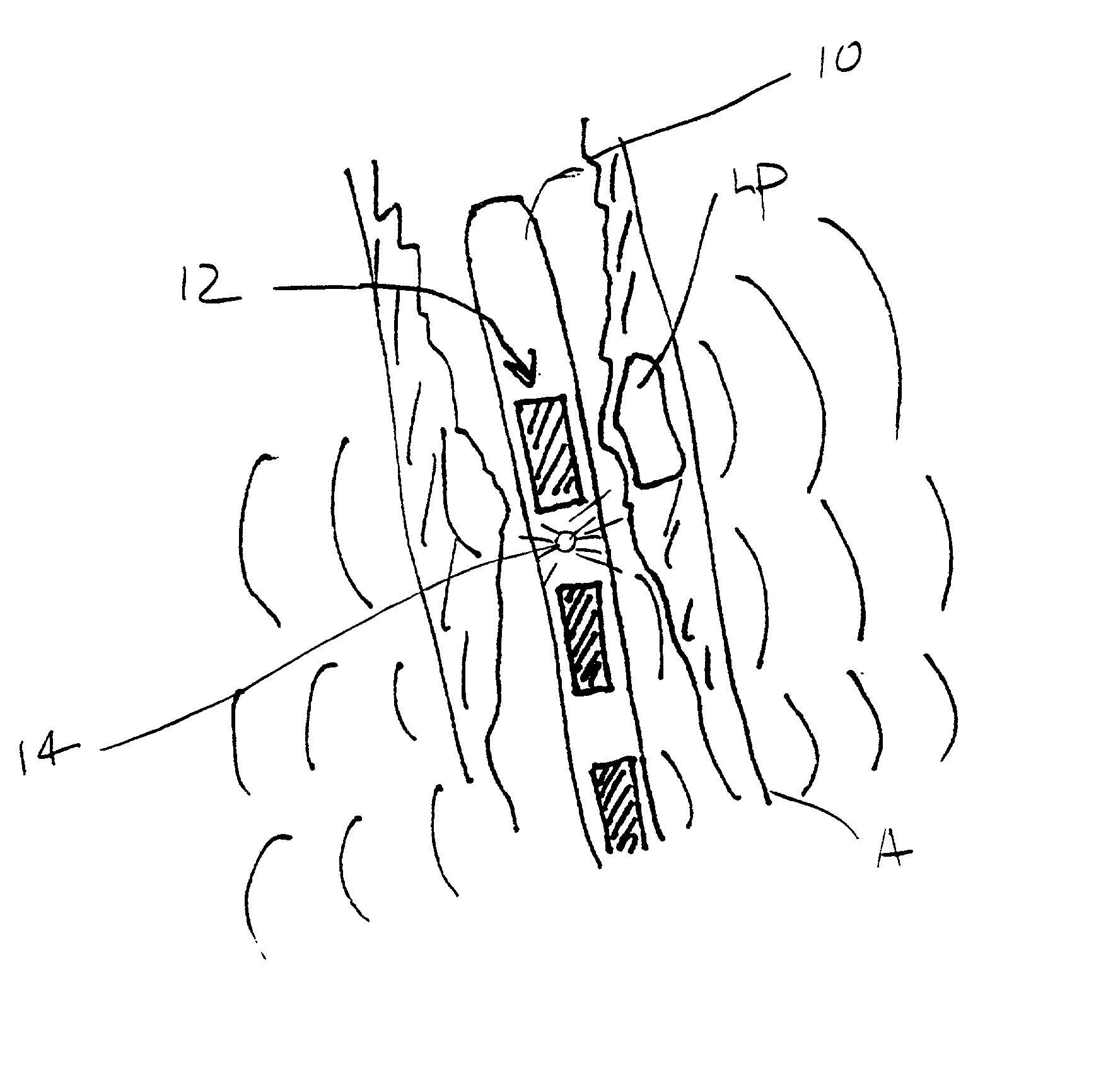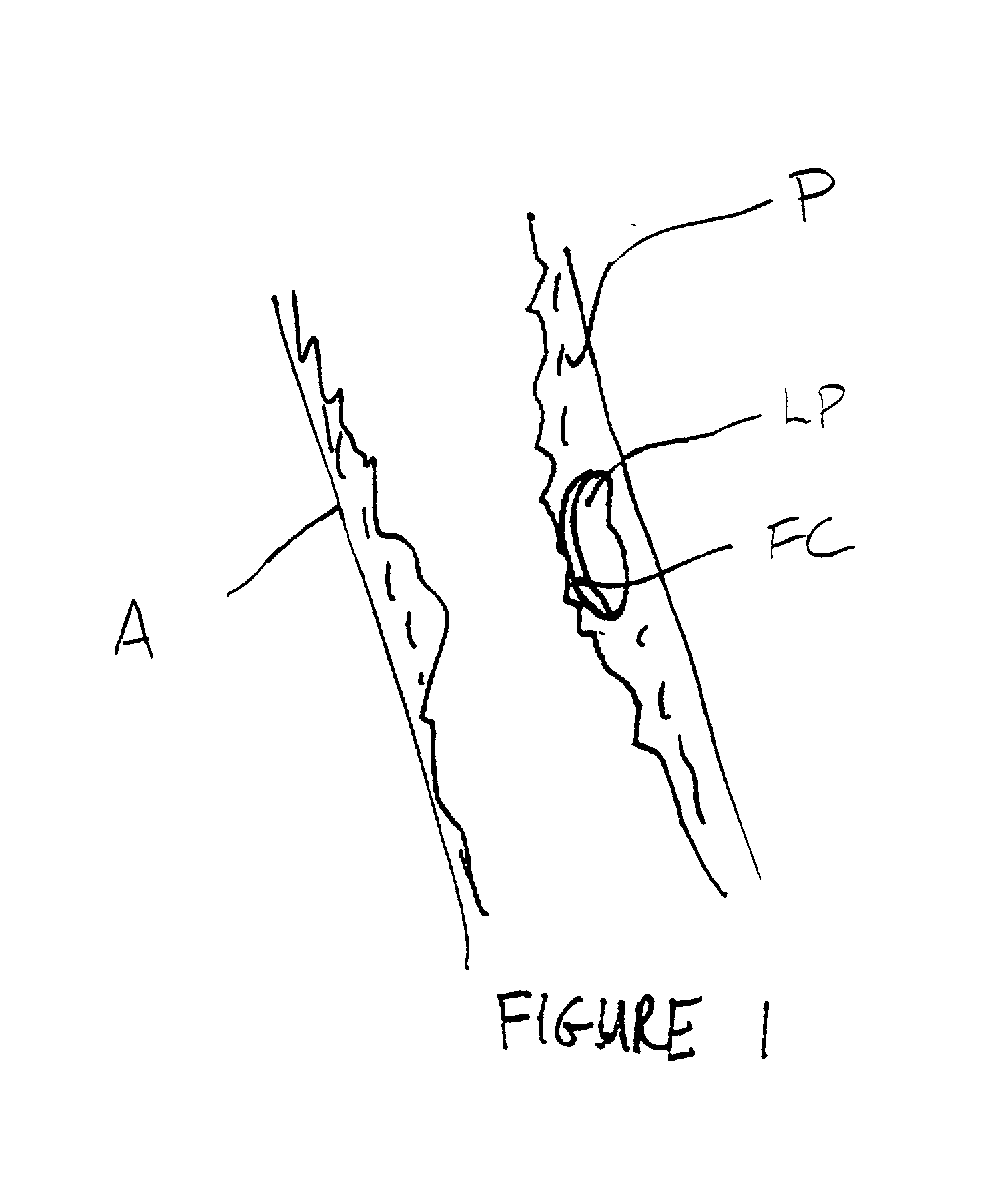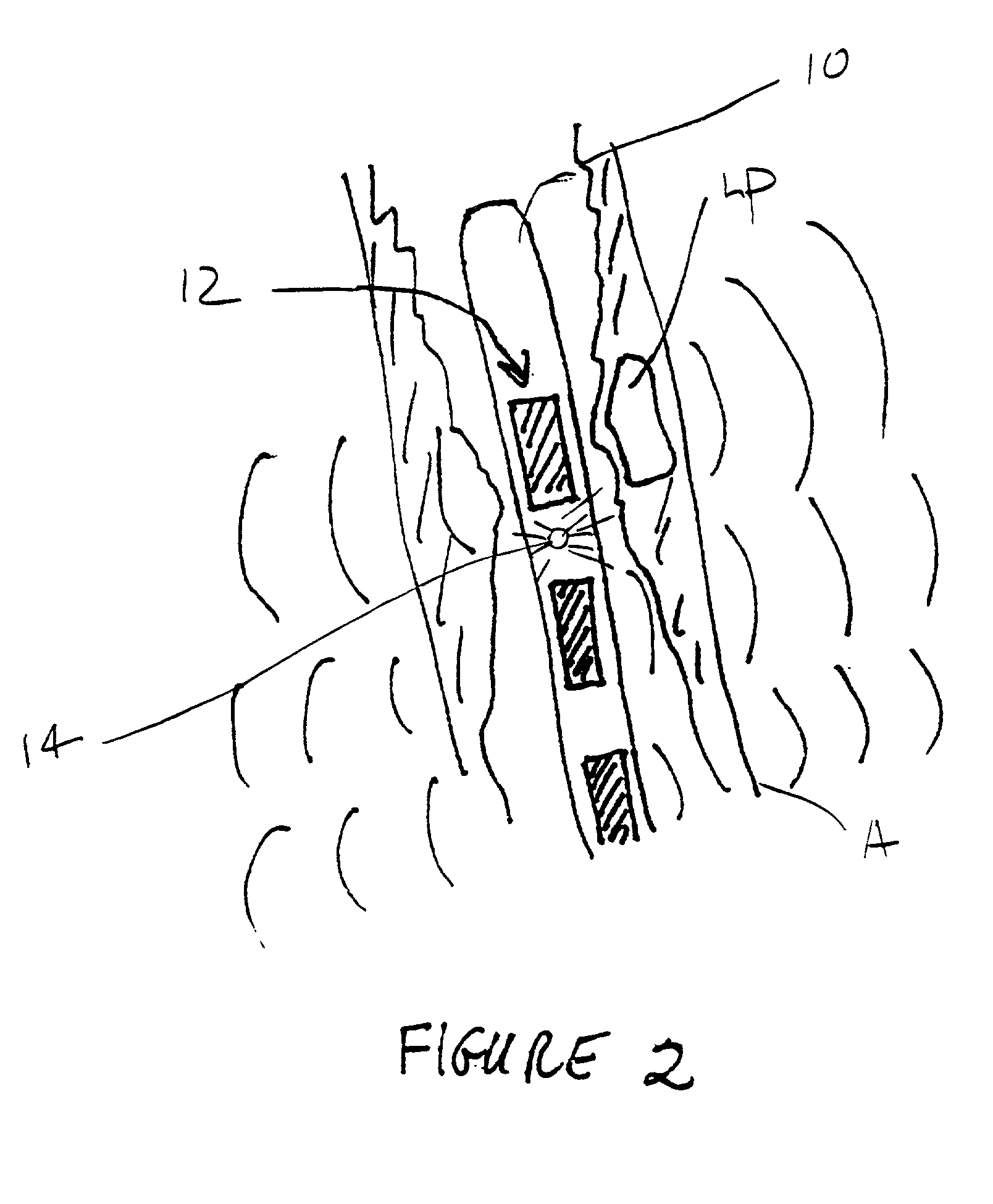[0015] Treatment according to the present invention is effected by exposing a target region within a
blood vessel of the patient to
vibrational energy at a
mechanical index and for a time sufficient to promote endothelial restoration within the target region. It has been found that the strength of the vibrational energy (as measured by the
mechanical index) and the duration of the treatment (as measured by elapsed
treatment time,
duty cycle, and
pulse repetition frequency (PRF)) can be selected to increase the thickness and strength of the thin fibrotic cap which covers the lipid
pool which is characteristic of unstable intravascular plaque. It is believed that the vibrational energy may act to increase
fibroblast proliferation and collagen and non-collagenous
protein synthesis, which in turn increases the thickness of the fibrotic cap. Additionally, it is believed that the vibrational energy may also promote the maturation of the lipid
pool within the plaque, further promoting plaque stability and decreasing the risk of
plaque rupture.
[0019] Once it is determined that therapy according to the present invention is to be performed, the particular motive therapy can be selected among different approaches. In a first approach, exposing the
blood vessel to vibrational energy comprises positioning an interface surface on or coupled to a vibrational
transducer within the blood vessel at a
target site within the target region. The
transducer is driven to direct vibrational energy from the interface surface against the blood vessel wall to enhance growth and stabilization of the fibrotic cap over the lipid-rich unstable plaque. Alternatively, the exposing step may comprise positioning an interface surface on or coupled to a vibrational
transducer against a
tissue surface which is disposed over the target region of the blood vessel, e.g., over the epicardium or
pericardium of the heart, or over a
skin surface, such as the leg, when treating the
peripheral vasculature. The transducer may be then driven to direct vibrational energy from the interface surface through overlying tissue and against the blood vessel wall. When employing such external techniques, the vibrational energy may be directed toward a
beacon or other
signal located within the target region. As a third alternative, an interface surface on or coupled to a vibrational transducer may be positioned within a second blood vessel located near the target region of the target blood vessel. For example, coronary and other veins are frequently located a
short distance from a corresponding
artery. By placing the interface surface within a
vein, a vibrational energy can be directed to an adjacent
artery for treatment of
disease within that artery. As with the prior cases, the transducer will then be driven to direct vibrational energy from the interface surface, in this case present within the second blood vessel, through tissue between the second blood vessel and the target blood vessel, and into the blood vessel wall of the target blood vessel. As a still further alternative, an interface surface coupled on or to a vibrational transducer may be positioned within a
heart chamber to treat a coronary artery positioned over the
heart chamber. The transducer will be driven to direct vibrational energy outwardly from the
heart chamber through the myocardium and into the coronary artery in order to treat the coronary wall. As a fifth alternative, tissue overlying a target blood vessel may be surgically opened to directly
expose the blood vessel. An interface surface on or coupled to a vibrational transducer may then be directly engaged against the wall of the target blood vessel (or over some
thin layer of tissue or other structures which may remain), and the transducer driven to direct vibrational energy into the target region of the exposed
target vessel.
[0021] The duration of treatment is defined as the actual time during which vibrational energy is being applied to the
arterial wall. Duration will thus be a function of the total elapsed
treatment time, i.e., the difference in seconds between the
initiation and termination of treatment; burst length, i.e., the length of time for a single burst of vibrational energy; and
pulse repetition frequency (PRF). Usually, the vibrational energy will be applied in short bursts of
high intensity (power) interspersed in relatively long periods of no excitation or energy output. An
advantage of the spacing of short energy bursts is that heat may be dissipated and
operating temperature reduced.
[0026] Even when vibratory forces are spaced-apart peripherally and / or longitudinally, the effective distribution of vibrational energy will be evened out by
radiation pressure forces arising from the absorption and reflection of
ultrasound on the circumferential walls of the
arterial lumen, thereby producing a uniform effect due to the fact that the tension in the wall of the lumen will tend to be equal around its circumference. Accordingly, a uniform
inhibitory effect can occur even if there is some variation in the intensity of the
ultrasound (as in the case of the non-isotropic devices described hereinafter). This is due to the fact that the tension around the circumference of the lumen will be equal in the absence of tangential forces.
 Login to View More
Login to View More  Login to View More
Login to View More 


